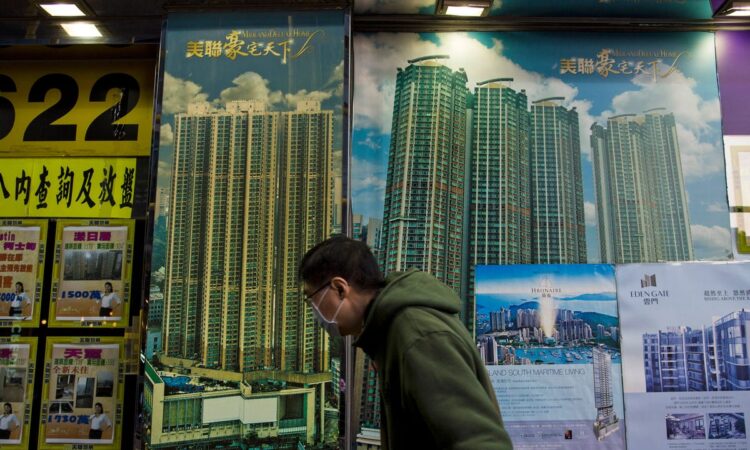
- The 2008 US housing bust suggests China is only halfway through its current downturn, Goldman Sachs said.
- China could see further declines in prices, housing starts, and new home sales, the bank said.
- The 2008 crisis differs from China’s, but policymakers must similarly work to prevent contagion.
The 2008 US housing market crash stands as one of the worst collapses in economic history — and its lessons remain relevant as China deals with its own real estate crisis.
Beijing is facing a narrow policy path toward an economic rebound this year, and the International Monetary Fund has warned that the country is in the midst of a historic property downturn matched only by the most severe collapses of the last three decades.
In a February 12 note, Goldman Sachs analysts warned that once a housing market deteriorates, it takes a long time to bottom — a lesson that was illustrated in the US subprime mortgage catastrophe.
“We estimate that real house prices in China declined 16% from the peak in 2021Q3 to 2023Q3,” Goldman analysts said. “If the US experience is of any guidance, we are only halfway through the downward price adjustment in the current housing downturn.”
Goldman said home prices in the US peaked in 2006 at roughly 40% above fair value. Yet that “expensiveness,” as determined by population, income, vacancies, and other metrics, remains far below what China faces today.
No bottom in sight
As things stand, China’s housing downturn that began in mid-2021 still has no end in sight, according to Goldman Sachs.
Housing starts and new home sales in the country have dropped 64% and 52%, respectively, since peaking at the end of 2020, and analysts expect the country’s inventory glut to keep both variables depressed for several years.
For context, US real house prices peaked in early 2006 and bottomed in 2012. Then, US homeowner vacancy rates peaked in 2008 and did not fall back to their long-term average until a decade later.
Beijing did take action on high home prices in 2016 by tightening mortgage requirements and imposing other restrictions, which were effective in the short term. The pandemic, however, reversed those efforts. Price growth accelerated, and trouble emerged for key developers like Country Garden and Evergrande.
Goldman’s derived measure of China’s real house prices has only dropped by half as much as the US saw during its six-year collapse, as the chart shows below.
“[O]verly loose mortgage lending standards and too much mortgage debt, which were at the center of the US subprime crisis, do not apply in China,” Goldman analysts said. “Instead, overly high house prices, which are rooted in the unique land supply mechanism, are the reason behind many economic distortions. Put differently, while the property problem in the US turned into a financial problem, the property problem in China is fundamentally a fiscal problem that needs to be addressed.”
Spillover effects
Goldman analysts maintained that Beijing must prioritize keeping contagion effects contained from the rest of the economy.
The US subprime crisis spilled over into the wider financial sector via products known as collateralized debt obligations, which amplified the impact of widespread mortgage defaults. Foreclosures soared as homeowners couldn’t afford to pay off or refinance their mortgages, which lowered house prices further.
For China to prevent a similar spiral, Goldman said Beijing must implement forceful policy measures to support local governments and banks, and ensure the delivery of pre-sold homes.
“Absent such decisive actions, negative spillovers are likely to prolong the economic damage of the housing downturn,” the analysts said.
